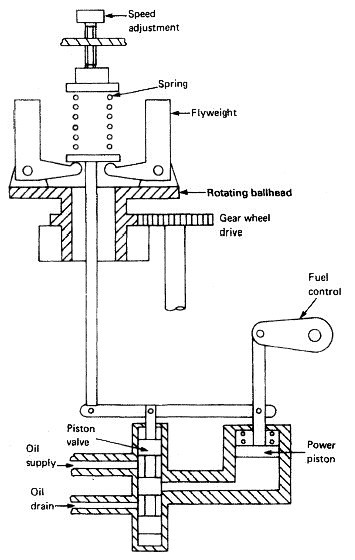
Speed Controlling Device- Governor for Marine Diesel Engine
The principal control device on any engine is the governor. It governs
or controls the engine speed at some fixed value while power output
changes to meet demand. This is achieved by the governor automatically
adjusting the engine fuel pump settings to meet the desired load at the
set speed.
Governors for diesel engines are usually made up of two systems: a speed sensing arrangement and a hydraulic unit which operates on the fuel pumps to change the engine power output.
Governors for diesel engines are usually made up of two systems: a speed sensing arrangement and a hydraulic unit which operates on the fuel pumps to change the engine power output.


